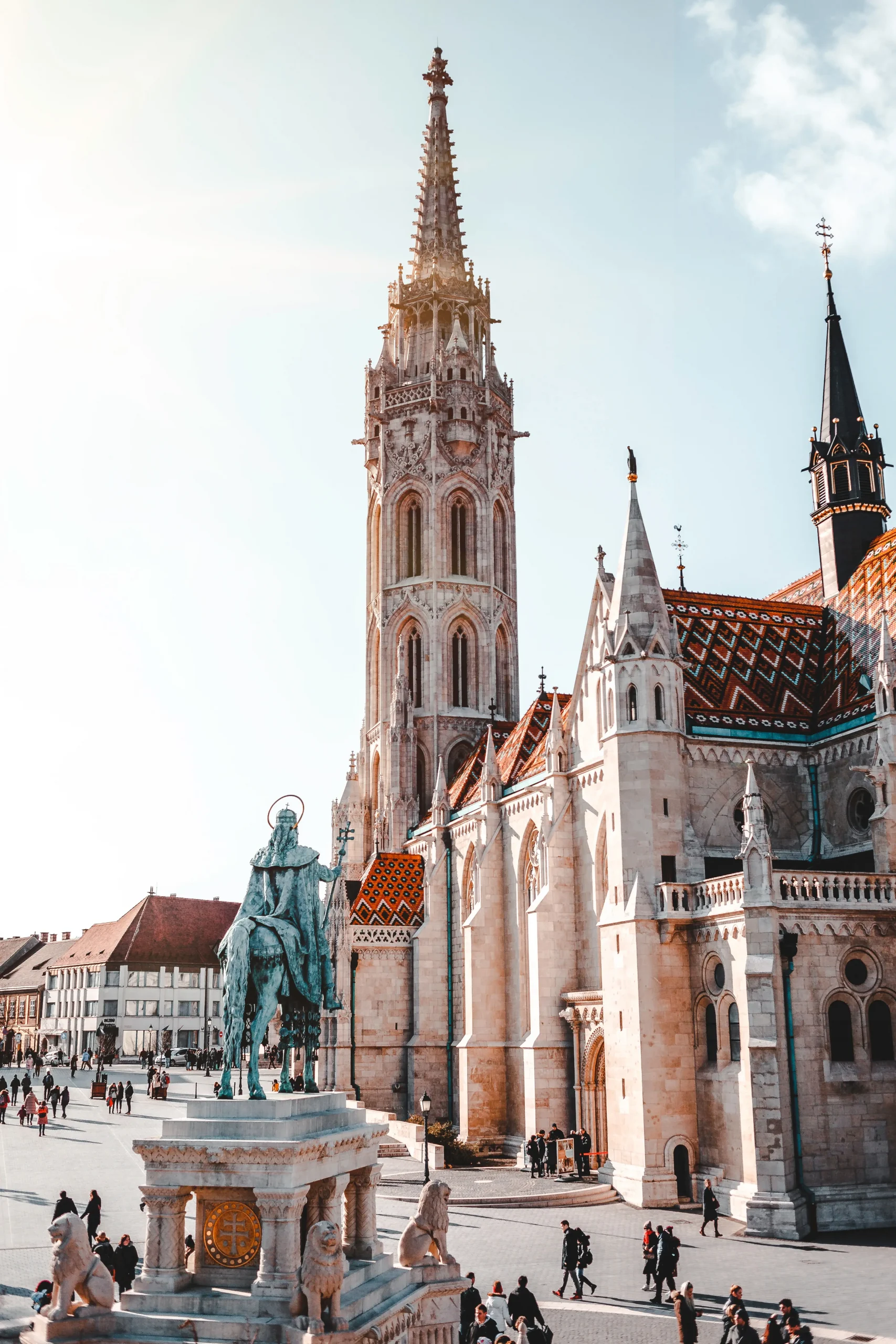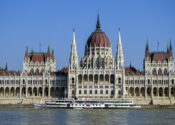
The most beautiful church of Budapest: the Matthias church
The beginning
The original name of the church is Budai Nagyboldogasszony-templom, and its popular name comes from the fact that both of King Matthias’s weddings were held there.
Originally built in the 13th century in the Gothic style, following French architectural influences, the church underwent renovations under King Louis the Great and saw the construction of the main tower during the reign of King Matthias.
The Matthias Church reached its medieval heyday during the reign of King Matthias Corvinus. The king commissioned the construction of the southwest bell tower, one of the most magnificent creations of domestic Gothic architecture. According to the inscription on the Matthias crest, the tower was completed by 1470. Although its original helmet was destroyed over time, the tower still preserves its form, although a complete replacement of its stone material became necessary in the late 19th century. However, the large arch column head supporting the choir stalls still bears the original stone carvings of the faces of John Hunyadi, Matthias, and Louis.
King Matthias also built a royal oratory next to the southern sanctuary of the church, but unfortunately, it was completely destroyed during the Turkish occupation. Around the end of the 15th century, they began the construction of the northwest tower, which was almost finished before the Turkish conquest. However, only Erhard Schön’s woodcut from 1541 now preserves its memory.
The great rebuild
During the Turkish era, the church was transformed into a mosque, with several parts being demolished. After the liberation of Buda, the Jesuits acquired the church and completely transformed it into the Baroque style. The large rose window was sealed off, the Gothic spire was dismantled, and a Baroque onion dome was added.
As a result, the facade of the church lost its original features. In the1700s, a fire and a lightning strike caused extensive damage to the church. Looking at pictures from the 1800s, one would see a vastly different image compared to its current state.
In 1867, after the Compromise, Emperor Franz Joseph and Queen Elisabeth were crowned there. In 1873, the king ordered the removal of the Baroque elements and restoration of the church to its original state.
Current look
From 1874 to 1896, under the leadership of Frigyes Schulek, significant reconstruction took place, giving the building its present-day appearance. Schulek restored the church’s original, distinctive character by demolishing adjacent sections of the building. He dismantled portions of the walls to reconstruct the original architectural features. While aiming to restore the previous state, he also renewed the damaged areas.
Schulek essentially reimagined the building, with his vision reflected in the northern chapel row and the upper part of the main tower. During this period, the church’s interior was adorned with decorative paintings, frescoes, and colourful stained-glass windows.
During World War II, the church suffered severe damage during the Siege of Buda. It was a remarkable miracle that the entire structure was not demolished after the war, and since then, continuous efforts have been made to restore the building. By the end of 2013, the Budavári Main Temple regained its former glory.



